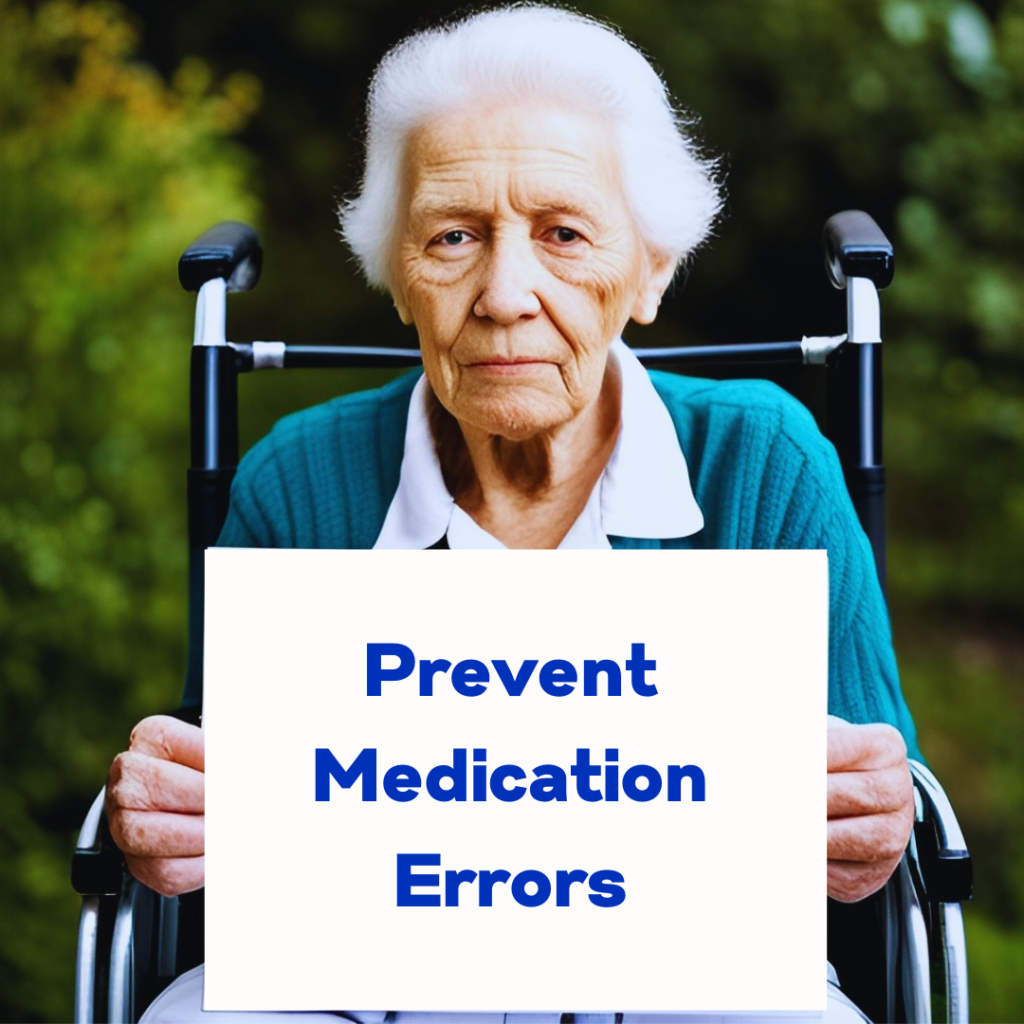As our loved ones age, it becomes increasingly important to ensure they receive adequate care. Caring for an elderly loved one can be a challenging task. It is especially difficult when they transition home from a healthcare setting such as a hospital, nursing home, or assisted living facility. These transitions in care can lead to critical errors in the treatment plan, such as medication errors, missed appointments, and miscommunication among healthcare providers. As an adult child of an aging parent, it is crucial to understand the possible errors and take necessary steps to prevent them to ensure a safe transition of care. In this blog post, we will go through some of the common errors that occur during transitions in care and the ways to avoid them.
From hospital visits to nursing homes and assisted living facilities, each transition comes with its fair share of challenges. One critical issue at each step is the transition of care – when your loved one goes from one place to another, communication becomes critical. Unfortunately, these transitions of care can be a breeding ground for errors to occur.

What is Transition in Care and why is it important for aging loved ones?
Why are these transitions of care a breeding ground for mistakes in care to occur?
When a patient transitions from one healthcare setting to another, it is referred to as a transition in care. These transitions of care involve multiple healthcare providers with diverse expertise, different locations, and separate communication systems. In such situations, it is common for information to get lost or misunderstood. Often, caregivers and patients are not informed about the changes made in the treatment plan, including medication and lifestyle changes. Consequently, errors can occur during the transition process, leading to serious complications and health issues. We will discuss the different transitions and how we can help you prevent errors that easily occur during this time going back home or from one facility to another.
The Benefits of Planning for a Smooth Transition in Care
We know most people are looking forward to going back home. This is one type of transition. Sometimes leaving the hospital you may need to go to a nursing home for a short-term rehab stay and then go home. This would be 2 transitions in care and 2x the possibility of mistakes. Being aware of and getting everything in writing from each facility will help you notice if there are any discrepancies from one place to the other so you can ask questions. Knowing what the intended treatment plan and medication list should be at the time of going home will help make the transition home successful. Medication errors can be prevented, discrepancies in the treatment plan can be addressed such as just what type of wound care is to be done at home. We will discuss potential errors as we go on.

Common Challenges Faced During Transitions in Care
Common errors that can occur during the transition in care.
The most common errors that can occur during transitions in care are medication errors, missed appointments, miscommunication and discrepancies in the treatment plan.. Medication errors can happen due to incomplete or inaccurate medication lists, incorrect dosages, or changes in medications that are not communicated to the patient or the caregiver. Missed appointments can result in delayed treatment and further complications. Miscommunication among healthcare providers can lead to conflicting advice, duplication of efforts, and additional healthcare costs.
1. Miscommunication
The first critical error that can occur during a transition of care is miscommunication. When different caregivers interact, there is always a chance that critical information will be lost in translation. For example, when a nurse transitions a patient from a hospital to a home care agency, they need to diligently record medication lists, dosages, and schedules. If this information is not properly communicated, the elderly individual may receive the wrong medication or dosage, leading to dangerous and potentially life-threatening consequences.
Miscommunication between providers can lead to errors in treatment plans. When communication is not clear, misunderstandings can occur, leading to unnecessary tests or treatments being administered. Implementing a clear communication plan between providers and involving family members in care discussions can help alleviate this type of miscommunication.
Prevention:
Ensure that all caregivers communicate all vital information to the next caregiver. Make sure to have a list of medications, dosages, and schedules so that the transition is a seamless one. It is important that there is a family support person to be present with the discharge instructions are reviewed to go home. If this is a two-step transitions such as from hospital to nursing home and then back home you must review the hospital discharge plan and compare it to the discharge instructions from the nursing home to make sure everything was carried over, communicated and any discrepancies have a reasonable explanation on why the changes occurred.

2. Medication Errors
As mentioned earlier, medication errors can be one of the most critical errors during transitions of care. As seniors have an elevated risk of drug toxicity and drug-drug interactions, medication errors can have serious implications. Sending the wrong medication or dosage can lead to hospitalization of the elderly individual and ultimately worsen their condition. One of the most common treatment errors is medication mistakes. This can include incorrect medication, incorrect dosing, or even missed medication. Careful attention to medications and clear communication between the care facilities should be a top priority. A comprehensive medication review with both facilities ensures that any changes are understood and implemented correctly.
Keep track of prescriptions. We have seen it many times occur in the hospital where a prescription is ordered and sent to the pharmacy and only to realize when the person is re-admitted to the hospital that the ordered prescription was not picked up. There are many reasons why a script is not picked up or not filled, but the most common one is the elderly person decides the medication is too expensive, so they leave it at the pharmacy. My own mother-in-law did that with her routine blood pressure medication. The price changed with the New Year and her medication went from $29.00 to $59.00 for a 3-month supply. She wouldn’t pick it up. Now many of us would not see this as a huge difference but to an elderly person on a fixed income this could be significant. We contacted the doctor and by knowing her formulary and making some adjustments we were able to get it reduced.
Commonly used medications that could be expensive to our seniors are the blood thinners Eliquis and Xarelto. A nurse advocate could help in the transition of care process and help you make sure we can avoid any errors during this vulnerable time.
Many elderly patients take several medications, and keeping track can be challenging. Sometimes, they may forget when to take which medication or how much they need to take. This can cause severe health problems. You can create a medication list and ensure that everyone follows the prescription dimensions recommended. Keeping track of the patient’s doses, timings, and types of medications adds an extra layer of security by minimizing the development of drug interactions.
Prevention:
Combat medication-related errors by employing a caregiver or family member to oversee the medication regimen. This individual can verify the medication list with the transfer documents to be sure the list is accurate and discuss any questions with the physician.

3. Discharge Planning Miscommunications
Discharge planning can be complicated, and miscommunications can lead to errors. The intake staff at the receiving facility must receive accurate information, such as current medication lists, diet restrictions, and wound care instructions. Communication between the two facilities is essential, and it is helpful for family members to be involved in the process to ensure a smooth transition.
Social issues such as lack of transportation, access to food, or housing can impact an elder’s care plan. It is important for providers to address these concerns during a transition and develop appropriate care plans around them. Social workers can offer support for these types of issues and help ensure a successful transition.
Prevention:
Make sure you receive all instructions in writing. Once again if there are two transitions, compare the hospital discharge instructions to the discharge instructions from the nursing home and question any discrepancies. It is important that the follow up doctor appointment is already made before your loved one goes home. It should be within a week of coming home from the hospital and within 10-14 days after coming home from a nursing home. Close follow-up can prevent re-hospitalization.
Make sure you are comfortable with your loved one going home. Don’t hesitate to meet with the Nurse Case Manager or the Social Worker in Discharge Planning to make sure all the necessary resources are lined up and ready before leaving the hospital or nursing home such as home health or personal care assistance. Make sure all the needs are brought forward and all your concerns are addressed.
Consult with your healthcare provider to determine the best time to transition a patient out. Monitor the elderly individual when transitioning into their new environment, as well.
4.. Lack of Professional Oversight
Finally, one area of concern that is often overlooked during transitions of care is the general lack of oversight from health professionals. Friends, family, and caregivers are essential in caring for the elderly. However, many aspects of care require the attention of trained professionals, especially the handling of medication.
Lack of Follow-Up Care

After a transition, follow-up care is critical to ensure proper healing and recovery. However, a lack of follow-up care is a common treatment error that can occur. This can lead to a failure to recognize complications or symptoms that may have occurred after the transition. It is crucial to ensure that follow-up care is arranged and maintained.
Prevention:
Arrange appointments between a medical professional and the elderly individual within the first seven days of transition. This will allow the physician to assess the patient’s condition and remind them of any tips or tricks for taking their medications and reducing any fall risks.
5. Tips on How to Be Intentional About Making a Smooth Transition-Know Your Resources
What steps can you take to prevent errors during transitions in care?
There are several strategies you can follow to prevent errors during transitions in care. One of the most important steps you can take is to keep a complete record of your loved one’s medical history, including current medications, allergies, and any relevant medical conditions. Share this record with all healthcare providers involved in the patient’s care. Before leaving the healthcare setting, make sure that you have a clear understanding of any upcoming appointments, medications, dietary restrictions, or other treatment plans.
Another essential step you can take is to ask questions. Don’t hesitate to ask healthcare providers questions about the treatment plan, medications, and any other concerns you might have. Make sure that healthcare providers communicate directly with you or your loved one, rather than passing information through multiple channels. Lastly, be aware of any changes or complications that occur after the transition in care and follow up with healthcare providers promptly.
Remember, it’s important to listen to your loved one’s needs, preferences, and concerns so that you can provide the appropriate level of support and care. By working together, you can help your loved one feel more comfortable, confident, and secure during this difficult time.
Transitioning an aging parent back home from the hospital or nursing home can be a stressful and emotional time for families. Fortunately, there are several resources available to assist with this process. Home health services can provide medical support and assistance with daily tasks. Home health care can provide skilled nursing care, physical therapy, and other services to help support your loved one’s recovery.
Nurse advocates can help navigate the healthcare system and ensure that all necessary appointments and follow-up care are scheduled. A nurse advocate can serve as a liaison between you and the healthcare system, advocating for your loved one’s needs.
Timely follow-up with the doctor and being present during the discharge can help ensure that all important information is communicated and understood.
It’s crucial to stay informed about medication options and coverage under the family member’s insurance plan to avoid any unnecessary financial burdens.
Additionally, being present during the discharge process can provide emotional support and help ensure that all questions are answered before leaving the hospital or nursing home.
By utilizing these resources, families can make the transitions of care smoother and more comfortable for everyone involved.

Conclusion:
Transition in care can be a challenging and stressful time for both caregivers and patients. However, by following some essential steps, you can reduce the risk of critical errors and provide your loved one with the best possible care. Keeping accurate records, asking questions, and maintaining open communication between healthcare providers and caregivers are the key strategies to avoid errors during the transition in care. As you navigate the healthcare system, remember that you are not alone. There are resources and organizations such as Your Nurse Advocate Consulting available to help you through this process, and you can always reach out for support and guidance.
With this post’s useful tips, we hope that you can keep your loved ones as safe and healthy as possible in their time of transition. By doing so, we can help our aging loved ones continue to live full lives, with all the care and support that they need! Don’t hesitate to reach out for assistance. We are here to help! Visit Your Nurse Advocate Consulting and consider a Free 30-Minute Consultation to discuss your situation and gain a few tips along the way!
Transitions in care can be a challenging time for seniors and their families. However, with careful planning, effective communication, and attention to detail, treatment errors can be prevented. By staying vigilant and involved in the care process, we can help ensure that our loved ones receive the best possible care during these transitions.
Thanks for stopping by and spending a few minutes with us today. If you or a loved one have had challenges with a transition in care or is planning on coming home soon don’t hesitate to reach out!
Take care and we’ll see you back here soon,
Pam and Linda
Your Nurse Advocates
Resources:
Free Community Forum “Speaking Out on the Care of Aging Parents“
Schedule a Free 30-Minute Consultation to Discuss Your Unique Situation.





